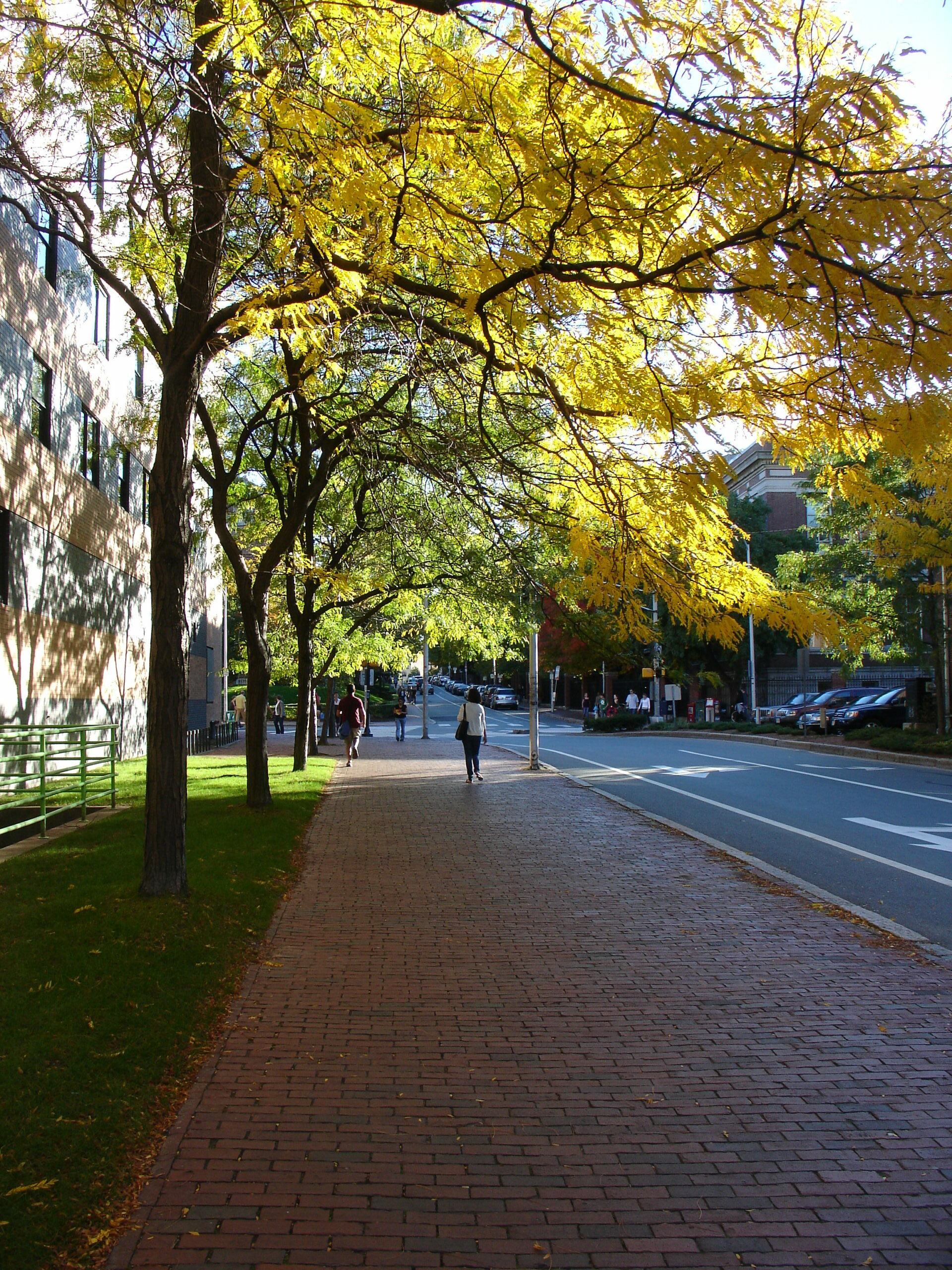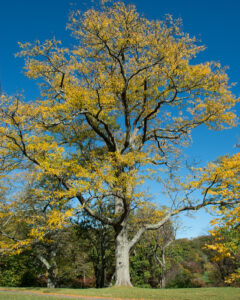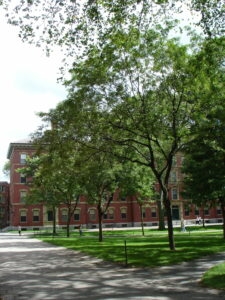Honeylocust
Overview
The Honeylocust plant is a versatile and resilient tree from the Fabaceae family, treasured for its decorative appeal. With its compound leaves and distinctive thorny branches, it’s a striking feature in landscapes. This hardy tree adapts well to various conditions, preferring full sun and well-drained soil, and it’s recognized for its ability to withstand urban pollution. Beyond its beauty, the Honeylocust is also intriguing for the diversity of phytochemicals it contains, hinting at potential but as of yet unexplored benefits.

Characteristics
Known for its thorny branches, compound leaves with multiple leaflets, and tolerance to various environmental conditions.
Region
The Honeylocust plant is usually found or grown in North America, particularly in the moist soil of river valleys.
Natural Habitat
In the wild, the Honeylocust plant is commonly found in the moist soil of river valleys.
Cultivation
Prefers full sun, tolerates various soil conditions including moist soils, and needs regular watering to establish, with moderate drought tolerance once established.
Uses and Benefits
When considering the Honeylocust for your garden or landscaping, you are looking at a plant that brings both beauty and brawn. Known for its attractive form and resilience, it’s particularly popular in urban settings—think bustling sidewalks and tree-lined streets where tougher trees are a must. The thornless variety of this tree adds an elegant touch without the prickly consequences.
But the Honeylocust isn’t just a pretty face. This tree is also a treasure trove of beneficial compounds, including:
- Over 60 phytochemicals, such as polyphenols1, which are associated with numerous health benefits
- Antioxidant activity that helps protect cells from damage caused by free radicals
- Potential medicinal uses that have yet to be fully explored in research
While specific applications of Honeylocust’s phytochemicals remain to be discovered, it’s clear that this tree has more to offer than just its ornamental qualities. As research continues, we may uncover even more exciting ways to leverage the natural compounds found within the Honeylocust.
So, whether you’re looking to add a touch of elegance to your urban garden or hoping to tap into the potential health benefits of this fascinating tree, the Honeylocust is a versatile and valuable addition to any nature-conscious home.

Cultivation Tips
Cultivating Honeylocust (Gleditsia triacanthos) is a rewarding experience for nature enthusiasts seeking to add a touch of elegance to their garden. To ensure your Honeylocust thrives, follow these key tips:
- Sunlight: Plant your Honeylocust in a spot that receives full sun exposure. This will promote lush, vibrant green foliage that turns a stunning yellow in autumn.
- Soil: While Honeylocust is adaptable to various soil conditions, it prefers well-drained soil for optimal root development. Remarkably, this resilient tree can even withstand urban pollution1.
- Pest management: Be vigilant in monitoring for potential pests such as plant bugs, spider mites, and cankers4. Proactive observation allows for timely intervention if issues arise.
By providing your Honeylocust with the proper growing conditions and attentive care, you’ll be rewarded with a robust, ornamental tree that adds beauty to your garden throughout the seasons.
Seasonal Considerations
When it comes to seasonal considerations for your Gleditsia triacanthos, there are a few key points to keep in mind:
- In the spring, your Honeylocust will burst into life with delicate, fragrant flowers. These blooms attract pollinators, adding a lively buzz to your garden.
- As summer arrives, the tree’s foliage will grow into a lush, vibrant green canopy, providing ample shade for those hot, sunny days.
- Autumn brings a spectacular display as the leaves turn a brilliant golden-yellow, creating a stunning contrast against the landscape.
- During winter, the Honeylocust’s unique branching structure is revealed, showcasing its sculptural beauty even in the dormant season.
To ensure your tree thrives through the seasons, it’s essential to provide consistent care. Water deeply and regularly during the first few growing seasons to establish a strong root system. Once established, the Honeylocust is relatively drought-tolerant, making it a low-maintenance choice for busy gardeners.
Pruning is best done in late winter or early spring before new growth emerges. This helps maintain the tree’s shape and encourages healthy growth. Keep an eye out for any signs of disease or pest issues throughout the year, and address them promptly to keep your Honeylocust in top condition.
By understanding the seasonal needs of your Gleditsia triacanthos, you’ll be able to enjoy its beauty and resilience for years to come, as it adapts to various environmental challenges1.

Issues and Troubleshooting
While the Honeylocust is a robust and adaptable plant, it’s not immune to problems. Gardeners may encounter pests like honeylocust plant bugs and spider mites, which can cause discomfort for your tree4. To prevent infestations, regularly monitor your Honeylocust for signs of these critters. Catching issues early makes them easier to manage.
Fungal infections, such as leaf spots and canker, can also afflict Honeylocusts. These ailments mar the tree’s beauty with unsightly blemishes and damage4. If you notice these problems, take action:
- Prune affected areas to prevent the spread of disease
- Ensure your tree isn’t stressed by environmental factors like poor soil or inadequate watering
- Maintain proper care and provide optimal growing conditions
By being proactive and attentive, you can help your Honeylocust thrive. With the right care, this elegant tree will continue to grace your garden with its beautiful foliage and structure for years to come. Remember, a little TLC goes a long way in keeping your Honeylocust healthy and problem-free.
History and Folklore
The Honeylocust plant, Gleditsia triacanthos, is deeply rooted in the history and folklore of North America. As the American elm tragically succumbed to disease, the resilient Honeylocust stepped forward to take its place in the spotlight.4 Its thorny branches, believed to have been used for protection, whisper tales of a time when trees were thought to shield and guard.2
As settlers journeyed across the continent, they encountered the Honeylocust and were captivated by its beauty and strength. The tree’s reputation grew, and it became a symbol of the untamed wilderness that early pioneers sought to tame. Its hardy nature allowed it to thrive in diverse environments, from the eastern United States to the Great Plains.
Native American tribes, including the Cherokee and Pawnee, recognized the Honeylocust’s unique qualities and wove it into their cultural tapestries. The tree’s pods were used as a natural sweetener, while its sturdy wood was crafted into tools and weapons. The Honeylocust became a central figure in many traditional stories, its presence a reminder of the deep connection between people and the land.
As the United States expanded and cities sprouted, the Honeylocust found a new role in the urban landscape. Its tolerance for poor soil and pollution made it an ideal choice for city planners looking to add greenery to bustling streets. Today, the Honeylocust stands tall in parks and along avenues, a living testament to the enduring spirit of the American heartland.
References
1. Honey-locust | The Morton Arboretum, https://mortonarb.org/plant-and-protect/trees-and-plants/honey-locust/
2. Honey locust | Tree, Leaf, Thorns, Uses, & Facts | Britannica, https://www.britannica.com/plant/honey-locust-tree-genus
3. Thornless honey-locust | The Morton Arboretum, https://mortonarb.org/plant-and-protect/trees-and-plants/thornless-honey-locust/
4. HONEY LOCUST – GLEDITSIA TRIACANTHOS | The UFOR Nursery & Lab, https://trees.umn.edu/honey-locust-gleditsia-triacanthos
5. Honey locust – Wikipedia, https://en.wikipedia.org/wiki/Honey_locust
Image Credit: geneva_wirth Attribution-NonCommercial License
Image Credit: Plant Image Library Attribution-ShareAlike License
Image Credit: geneva_wirth Attribution-NonCommercial License
Nicolas Duval
Nicolas is a passionate advocate for nature and the art of wildcrafting. His dedication shines through in Wildcraftia, a website he meticulously crafted to serve as a haven for nature enthusiasts worldwide. Driven by a deep appreciation for nature’s connection to humanity, Nicolas embarked on his journey in 2011 with SmokableHerbs, a platform showcasing his love for nature’s bounty. Building upon this foundation, he established Smokably, a thriving online store offering premium herbs and blends to a global audience.
